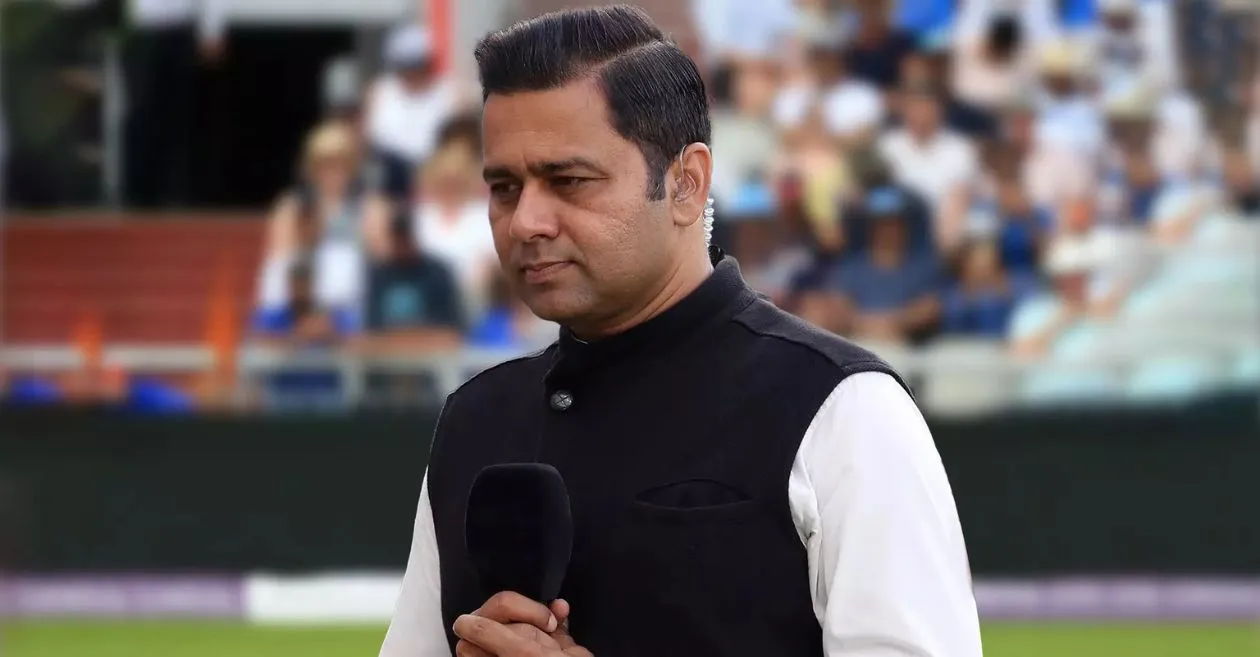When 28 wickets tumble in just two days of a Test match, the cricketing world sits up and takes notice. And yet, the response to such carnage can vary sharply depending on geography. This was the case during the ongoing ICC World Test Championship Final 2025 at Lord’s, where batsmen found themselves at bay amid seam, swing, and bounce. Australia were bundled out for 212 in the first innings, South Africa collapsed to 138, and then again faltered to 144/8 in their second — the contest hung precariously in balance by Day 2.
Amid the intrigue, former India opener Aakash Chopra seized the moment to call out what he sees as a glaring double standard. On his YouTube channel, he remarked that a similar pitch in India—yielding 28 wickets in two days—would spark outrage, accusations of “pitch doctoring,” and cries that “Test cricket was being killed.” But at Lord’s, that identical scenario is branded merely “sporting,” and the focus shifts onto technical flaws or bowling brilliance.
His broadside strikes at the heart of how cricket’s global media narrative plays favorites depending on which side of the equator it occurs—prompting questions that stretch well beyond one ground.
The Wicket-Fest That Fueled the Discussion
From the moment play started, Lord’s delivered drama. The red Dukes ball refused to settle.
| Innings | Score | Overs |
|---|---|---|
| Australia 1st | 212 all out | 55 |
| South Africa 1st | 138 all out | 48 |
| Australia 2nd | 144/8 | 40 |
← 28 wickets in Day 1–2. Only two batsmen passed fifty: Steve Smith (55), Beau Webster (60). Everything else? Wobbles, edges, and wickets sieved by movement. The ball wasn’t just swinging; it was dancing, skidding, and bouncing unpredictably.
Australian stalwart Pat Cummins posted a 218-run lead by Sunday stumps, leaving South Africa yet again in an uphill battle. But the core question remained: Was this cricket? Or chaos?
Aakash Chopra’s Provocative Question
This is where the former opener stepped in:
“If 28 wickets had fallen in two days in India, there would have been uproar… talk of doctoring pitches… talk of killing Test cricket.”
Instead, at Lord’s, it’s deemed “sporting.” When batters fall early, they’re blamed—“technique failed.” When the same ball does it in India? Pitch is cursed, court of public opinion dubs the surface unfair.
He added pointedly:
“If the batters’ technique is the issue, it’s valid everywhere. Why is England rated differently?”
It’s a searing line that cuts through the received narrative, exposing possible bias in cricket discourse.
England vs India: The Pitch Perception Divide
In India: Turn and bounce are often met with suspicion. Commentators cry foul: the pitch is doctored. Bowlers hunched, finger-tip the seams, and spin is wielded mercilessly by home sides. Fans and analysts alike decry such surfaces as skewing the essence of Test cricket.
In England: Swinging, seaming wickets are embraced as evidence of “true sportsmanship”—a test of technique. Erratic bounce? Great! A seam-perfect wicket? Excellent! It’s seen as part of the tradition, not an outrage.
Chopra dismantles that double standard: Greatness is earned—not granted by geography.
Match Context: When Sport and Strategy Collide
Sure, Lord’s delivered movement—but cricket is equal parts ball movement and skill in response.
-
Australia’s lead: Cummins’ bowlers ran through South Africa not by luck but by discipline. Dense swing, met by seamers who maintained probing lines and lengths.
-
South Africa’s reply: Rabada and Ngidi struck back, destabilizing Australia’s tail with their pace and bounce. This match already swung twice; the Lord’s pitch didn’t dominate—it invited performance.
Chopra acknowledges that bowling wins matches, but he believes credit should lie with those who harness advantage—no matter where it lies.
Australia’s Lord’s Record: A Double-Edged Sword
Australia’s statistics bolster Chopra’s argument—but also frame the stakes.
Historic trend: No side has lost at Lord’s when defending a lead of over 200 runs—until possibly now. The current lead is 218; South Africa must break precedent to turn it around.
Chopra warns:
“That history is no guarantee… This pitch could help South Africa level things.”
He’s not dismissing the bowler’s ability; he’s suggesting the stage allows for legend-making, not fixed narratives.
The Spirit of the Debate: Fairness vs Favoritism
At its core, Chopra’s point is about consistency. Cricket’s storyline changes with location:
-
In India: Maker of devilish pitches → vilified.
-
In England: Lord’s seamers’ paradise → venerated.
If the same wickets had fallen at Chepauk, Bhubaneswar, or Visakhapatnam, would spin have received the same praise? Would seamers have earned the same nod of “sporting” status?
Chopra’s argument moves beyond national pride—it’s about treating excellence and adversity with equal respect.
Voices from the Fold
Former players and analysts echo the sentiment:
-
Former India Test batsman:
“When Indian pitches over-reward one skill set, we blame the surface. But seam is just as challenging.” -
Retired England bowler:
“Conditions matter everywhere—why should Lord’s be exempt from such scrutiny?”
What Happens Next: A Pitch Under the Microscope
Lord’s isn’t just a venue—it’s the cathedral of cricket. Its pitch undergoes intense scrutiny and preparation. On Day 3–4:
-
Should the ball continue its unpredictable bounce?
-
Will veteran batsmen Bat অসমৰalgorithm Stability?
-
Are we witnessing bowlers adapting, or pitches dictating?
The answers could redefine the meaning of sporting. If Pakistan had this more than. We’ll know soon.
Bigger Lessons for Test Cricket
Beyond the match on Lord’s grass, Chopra’s critique resonates with broader issues:
-
Perception matters: Conditioning of pitches affects the lens through which we view skill.
-
Global standards: Should there be a universal benchmark for Test-building surfaces?
-
Narrative fairness: A match’s storytelling should honor both dominance and underdog rises—no matter where.
Clock Ticks for South Africa—and for Pressure
South Africa’s chase is underway. The run deficit remains, but early wickets would shatter the myth of Lord’s invincibility. A twist of swing, a splice at bat, could swing the momentum.
They’ve got the bouncers. Australia’s 218-run cushion is no longer impregnable.
And if the pitch hands them another surprise? Chopra may get his answer—one half of cricket’s world willing to re-define what sporting really means.
Final Thoughts
Aakash Chopra’s critique isn’t an attack on Lord’s prestige—it’s an appeal for equity in language and legacy. If Test cricket is to survive as the ultimate contest of skill, then it must be defended not by bias, but by bravery—defending brilliance no matter where it’s born.
This match isn’t just for the mace. It’s for the soul of Test cricket.
Please check for information on the best betting sites in India – https://selectory.org/best-betting-sites/















